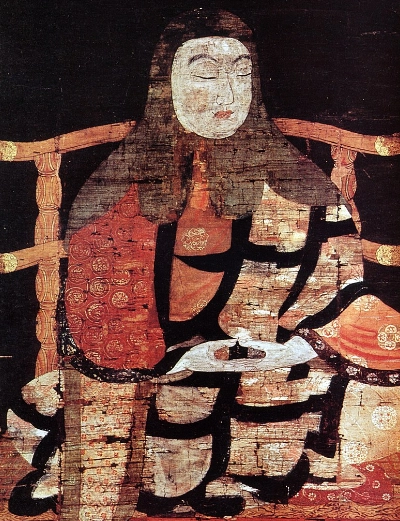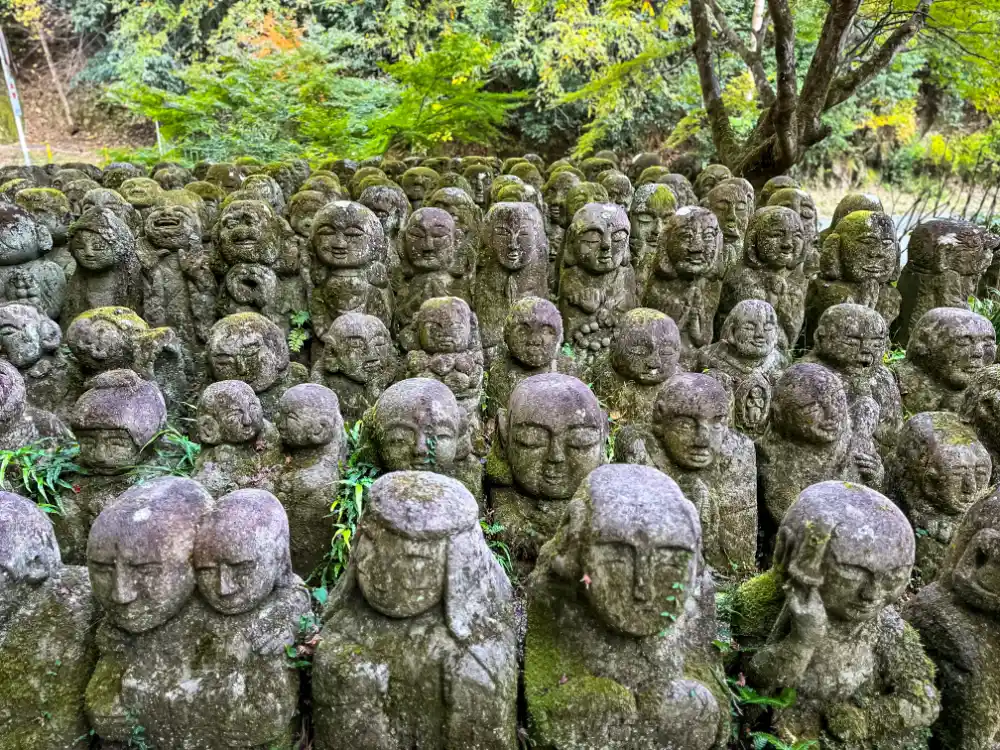Saichō (最澄, 767–822) — Founder of the Tendai School in Japan

Overview
Saichō (最澄) (posthumously known as Dengyō Daishi (伝教大師)) was the founder of the Japanese Tendai School, a comprehensive form of Lotus Sutra–centered Buddhism established on Mount Hiei near Kyoto.
After studying Tiantai Buddhism in China (804–805 CE), Saichō returned to Japan carrying the texts, meditative methods, and ethical ideals of Zhiyi’s Tiantai system. His vision of Buddhism united scholarship, contemplation, ritual, and moral discipline into one integrated path toward enlightenment for all beings.
Under his leadership, Mount Hiei’s Enryaku-ji monastery became the spiritual heart of Heian Buddhism and the training ground for many of Japan’s later founders, including Hōnen, Shinran, Dōgen, and Nichiren.
Life & Times
| Year | Event | Significance |
|---|---|---|
| 767 | Born in Ōmi Province (modern Shiga Prefecture) | Raised in a period of intense religious reform and state control over ordination. |
| 788 | Establishes a small hermitage on Mount Hiei | The beginnings of Enryaku-ji, devoted to meditation and Lotus Sutra study. |
| 804–805 | Travels to Tang China as part of the official Japanese mission | Studies Tiantai doctrine and practice on Mount Tiantai; receives transmission from the monk Daosui. |
| 806–820 | Returns to Japan; develops the Tendai School | Integrates Tiantai meditation with esoteric Mikkyō rituals, Pure Land nembutsu, and Mahāyāna precepts. |
| 818–821 | Advocates for a new ordination platform based on the Bodhisattva Precepts (Brahmā Net Sutra) | Challenges Nara orthodoxy; envisions a purely Mahāyāna sangha. |
| 822 | Passes away on Mount Hiei | Posthumously granted the title Dengyō Daishi; Tendai becomes the foundation of Japanese Buddhism. |
Tendai Buddhism: Saichō’s Vision
Lotus-Centered Inclusivity
At the heart of Saichō’s system lies the Lotus Sutra, interpreted through the lens of Tiantai’s One Vehicle (Ekayāna). He taught that all Buddhist paths are expressions of the same truth, each a skillful means (upāya) suited to capacity.
Integrated Curriculum
Saichō envisioned a complete path of training combining:
- Scriptural study: mastery of Tiantai texts and Mahāyāna sutras
- Meditative practice: the Four Samādhis and Threefold Contemplation taught by Zhiyi
- Esoteric ritual (Mikkyō): symbolic enactments of awakening, absorbed from Tang practices
- Ethical precepts: moral formation through the Brahmā Net Sutra’s bodhisattva vows.
This synthesis created a dynamic monastic and lay curriculum emphasising both wisdom (prajñā) and compassion (karuṇā).
The Twelve-Year Mountain Training Ideal
Saichō established a twelve-year monastic training program on Mount Hiei emphasising seclusion, study, meditation, and service. Disciples committed to remain on the mountain, cultivating inner realisation before reentering society to benefit others.
Who was Saicho?
Saichō (Dengyō Daishi) established Tendai Buddhism on Mount Hiei, near Kyoto, as Japan’s home for Lotus-centered practice.
After studying Tiantai Buddhism in China (804–805 CE), he returned with Zhiyi’s teachings on the Lotus Sutra, meditation, and the Bodhisattva Precepts, shaping a distinctly Japanese synthesis of study, contemplation, ritual, and ethical discipline.
Saichō envisioned an inclusive path in which all practices lead to awakening, expressed through the One Vehicle (Ekayāna) of the Lotus Sutra. His reforms replaced traditional Vinaya ordination with a Mahāyāna precept platform, and his twelve-year training program on Mount Hiei became the model of monastic discipline for centuries.
From this foundation, Tendai nurtured Japan’s great Buddhist traditions—Pure Land, Zen, and Nichiren—while preserving the Lotus Sutra’s vision of universal enlightenment.
Mahāyāna Precept Platform (大乗戒壇)
Saichō’s most radical innovation was the creation of a Mahāyāna precept ordination platform, independent of the traditional Vinaya system of Nara’s state temples. He argued that Japan should ordain monks directly as bodhisattvas, reflecting the universality of Buddha-nature.
This redefined the moral and institutional framework of Japanese Buddhism, emphasising intentional compassion and inner transformation over external ritual conformity.
Doctrinal Foundations
Saichō’s Tendai drew heavily from Zhiyi’s Tiantai philosophy, especially:
- The Threefold Truth: emptiness, provisional existence, and the Middle
- The Four Samādhis: balancing meditation and daily life
- The Five Periods and Eight Teachings: classification of the Buddha’s teachings.
By incorporating esoteric Mikkyō, Pure Land chanting, and Zen-like meditation, he demonstrated that all practices are harmonised through the Lotus Sutra’s universal wisdom.
See also: What Is Tiantai Buddhism? →
Legacy
Saichō’s Tendai School became the seedbed of nearly all later Japanese Buddhist movements. His disciples and successors transformed his inclusive vision into distinct lineages:
- Hōnen (Pure Land), emphasizing faith in Amida’s vow
- Shinran (True Pure Land), the path of gratitude and reliance
- Dōgen (Zen), direct realization through meditation
- Nichiren (Lotus), exclusive devotion to the Lotus Sutra.
Despite their differences, all inherit Saichō’s conviction that awakening is universally accessible.
Today, Enryaku-ji remains both a historical monument and a living monastic centre on Mount Hiei, its halls overlooking Lake Biwa symbolising the harmony between stillness and engagement.
Key Takeaways
- Saichō (767–822) founded the Tendai School, adapting Tiantai Buddhism to Japan
- Emphasised the Lotus Sutra as the unifying scripture of all teachings
- Integrated meditation, esoteric ritual, and Mahāyāna ethics into a single curriculum
- Established the Mahāyāna precept platform and twelve-year training program on Mount Hiei
- His movement shaped the future of Japanese Buddhism across multiple schools.
Recommended Reading
- Tiantai Lotus Texts; BDK English Tripiṭaka
- Saichō: The Establishment of the Japanese Tendai School; Paul Groner
- Foundations of T’ien-t’ai Philosophy; Paul L. Swanson
- Enryaku-ji and Early Heian Buddhism; various historical studies
Related Articles:
Zhiyi: Founder of Tiantai Buddhism →
What Is Tiantai Buddhism? →
The Infinite Meanings Sutra →
The Lotus Sutra: Heart of the Tiantai Vision →
FAQ
Who was Saicho?
Saichō (767–822), also known as Dengyō Daishi, was the founder of Japan’s Tendai School. He brought Tiantai Buddhism from China and established Enryaku-ji on Mount Hiei as a center of Lotus Sutra–based study and practice.
What is Tendai Buddhism?
Tendai Buddhism is Japan’s form of the Tiantai tradition, emphasizing the Lotus Sutra as the supreme teaching and integrating study, meditation, esoteric ritual, and ethical practice into one inclusive path.
What innovations did Saicho introduce?
Saichō established the Mahāyāna precept platform based on bodhisattva vows, created a twelve-year training program on Mount Hiei, and promoted a Lotus-centered unity of all Buddhist practices.
What is the legacy of Saicho and Mount Hiei?
Mount Hiei’s Enryaku-ji monastery became the cradle of Japanese Buddhism. Many later founders, including Hōnen, Shinran, Dōgen, and Nichiren, trained within its Tendai system.

